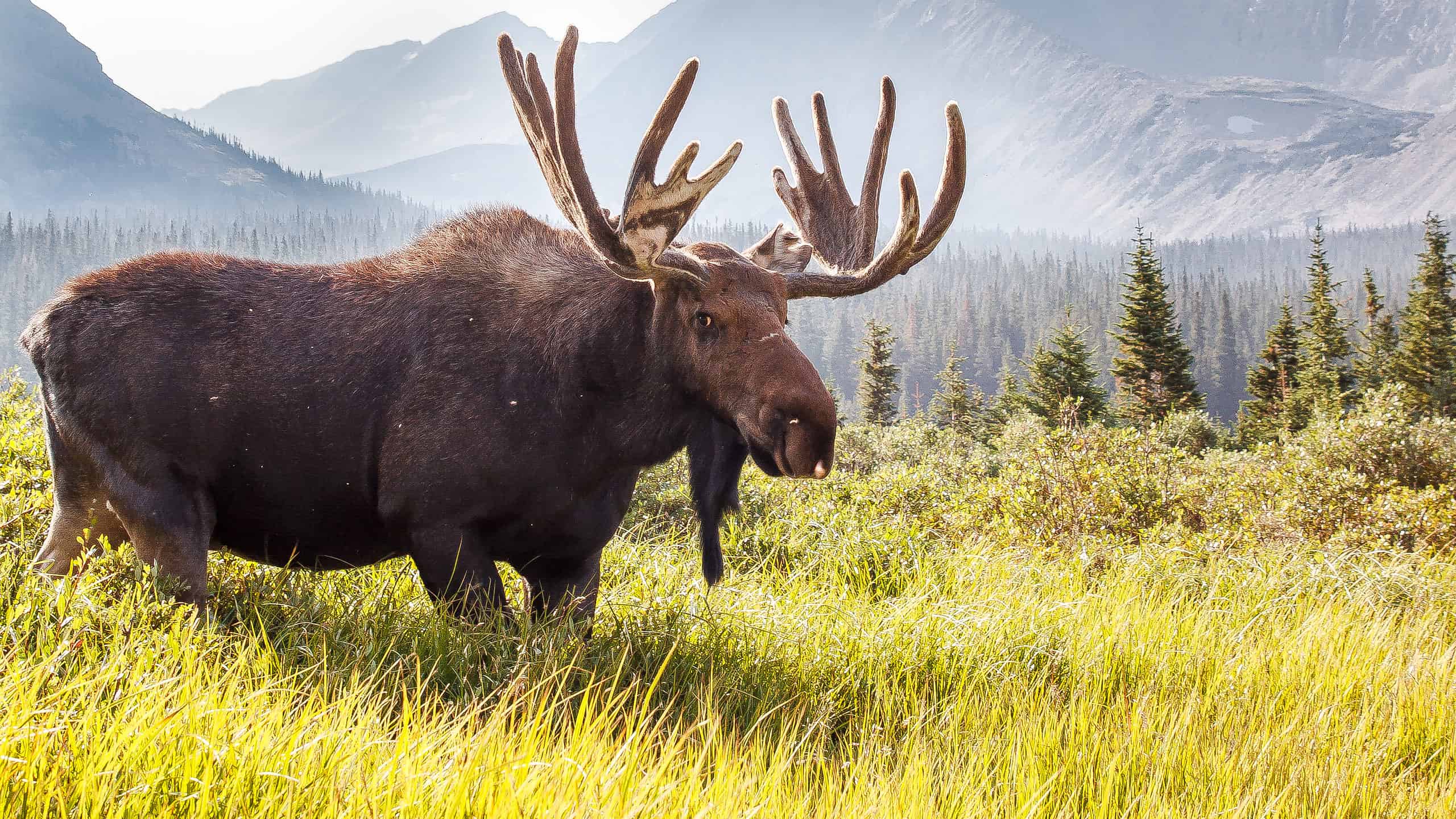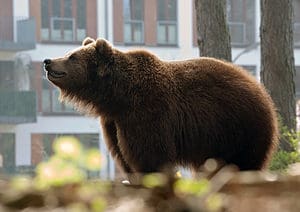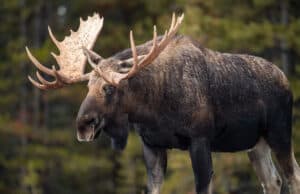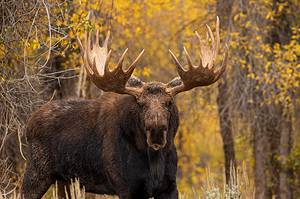The moose (in North America) or elk (in Eurasia) (Alces alces) is a member of the New World deer subfamily. Moose are the largest members of the deer family, standing six feet (1.8 meters) tall from hoof to shoulder, and weighing more than 1,000 pounds (450 kilograms). Each of their light to dark brown hairs is hollow, and the air trapped inside provides insulation. A flap of skin called a dewlap hangs from the throat. Males are distinguished from females by their antlers, which grow up to six feet across.
Moose are large, majestic creatures scattered in colder regions all across the globe. Have you ever wondered, how many moose still roam the world? This article aims to answer that question!
How Many Moose Still Roam the World?
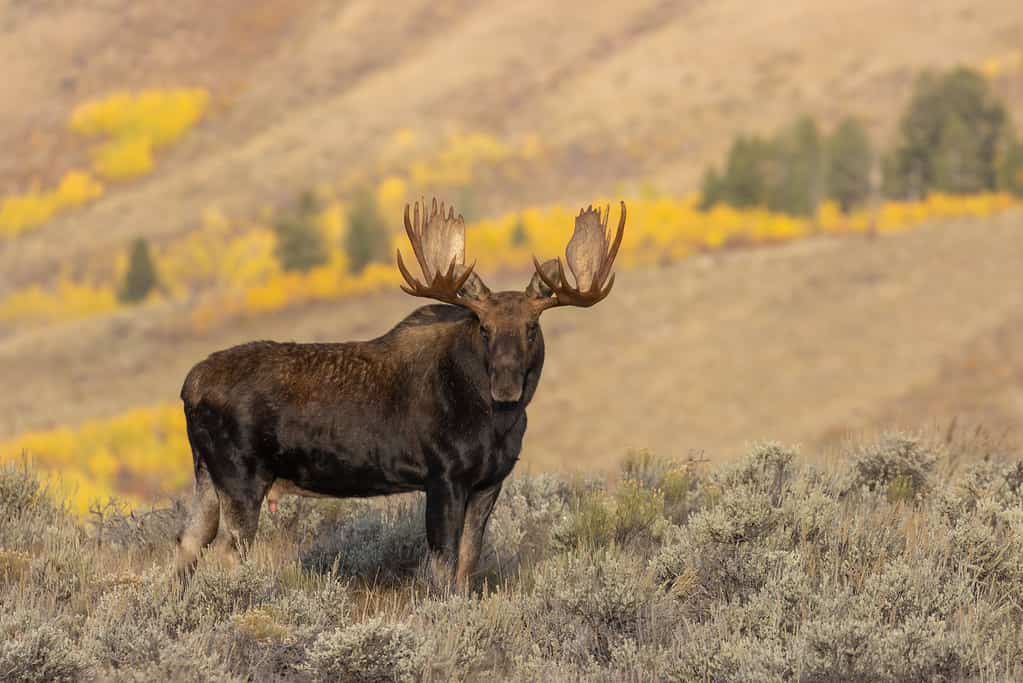
There are probably roughly 1.5 million moose in the world.
©Tom Tietz/Shutterstock.com
The global population of moose is estimated to be about 1.5 million. In the late 1940s, 1950s, and early 1960’s moose gradually increased in abundance, reaching maximum numbers around 1965. Since that time moose population has generally declined to the present levels.
Currently, most moose occur in Canada, Alaska, New England (with Maine having most of the lower 48 states), New York State, Fennoscandia, the Baltic states, Poland, Kazakhstan, and Russia. Due to their large size and insulating fur, moose are limited to cold climates. Forested areas with streams and ponds are ideal moose habitats.
Sweden has the densest population of moose in the world. Although hundreds of thousands of moose inhabit Sweden it can still be difficult to see a Moose in the wild. Some of the most densely populated areas with moose in Sweden are Bergslagen and the rest of Central Sweden. An icon of the Maine woods, Maine is home to the highest moose population in the lower 48 states.
Are Moose Endangered?
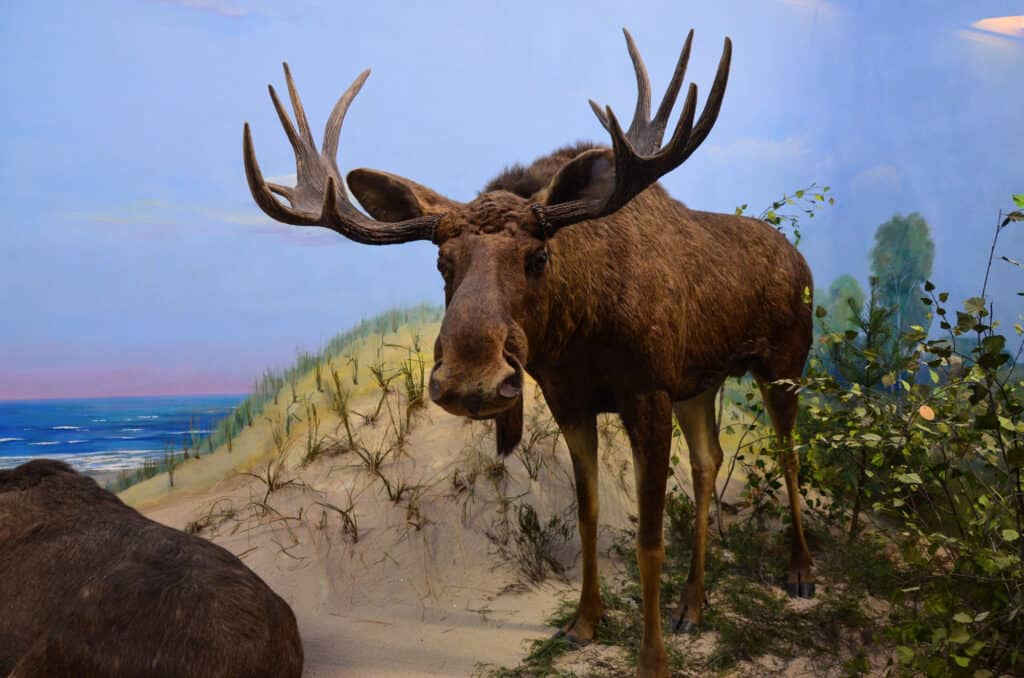
Moose populations fluctuate in abundance from one region to the next.
©D.serra1/Shutterstock.com
Moose are abundant in some areas and endangered in others. For example, the moose population is abundant in some areas of Canada such as New Brunswick and Newfoundland but is endangered in mainland Nova Scotia. Moose declines are particularly severe in Minnesota, with only an estimated 4,000 moose surviving there today. They are not an endangered species in Alaska. This is why it is legal to hunt them there. Non-Alaska residents can shoot both moose and black bears in the state without a guide, unlike many other states where it is illegal to even hunt these particular animals. This is why many hunters from around the globe travel to the state.
Are Any Moose Species Extinct?
Cervalces scotti, the elk moose or stag moose, is an extinct species of large moose that lived in North America during the Late Pleistocene epoch. The Caucasian moose was a subspecies of moose that was quite common until the mid-19th century when populations began to decrease due to overhunting. It became extinct sometime at the beginning of the 20th century.
Can Moose Be Hunted?
Moose and caribou are among the largest game animals in North America, and both are huntable in Alaska. Moose are the most sought-after big game animal in Alaska. Hunters report harvesting over 7,000 of Alaska’s estimated 175,000 moose each year. Going out to “get a moose” is a fall ritual for tens of thousands of Alaskans.
What Is The Number One Threat To Moose?
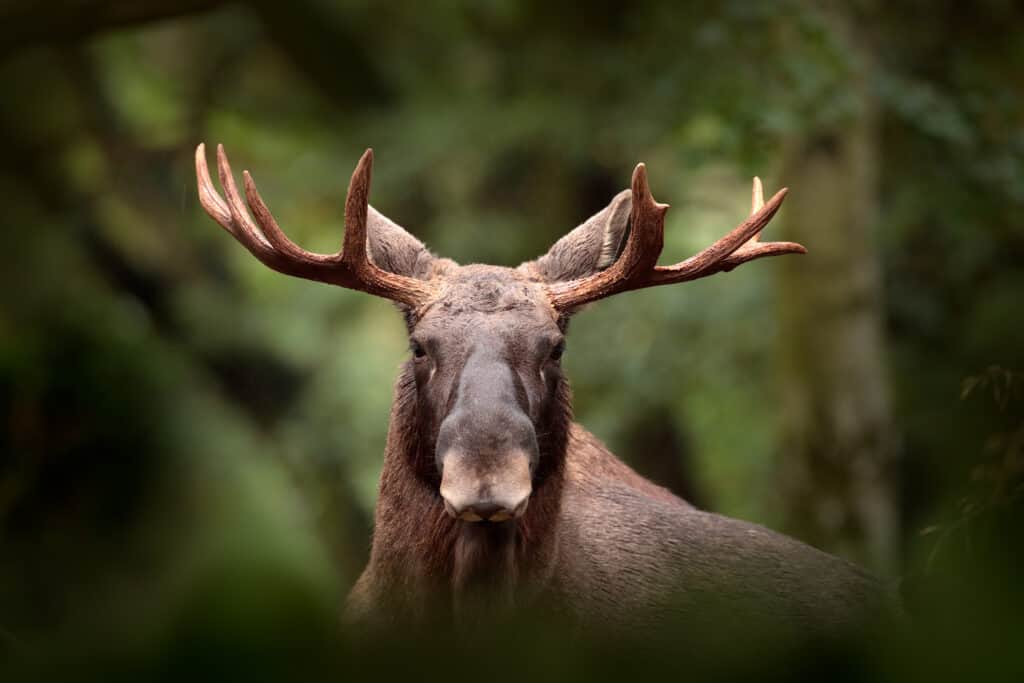
Warming temperatures are a contributing factor in the harm done to moose by overheating, sickness, and tick infestation.
©iStock.com/Ondrej Prosicky
Hunting and habitat degradation are major threats to moose, but now climate change has caused moose populations in Minnesota to fall dramatically. Moose are being hurt by overheating, disease, and tick infestation—all tied to warming temperatures.
Moose also suffer from a predator of another sort, parasitic brain worms. White-tailed deer are carriers of the parasite, but it has no effect on them. When deer defecate, the brain worms are transferred from their waste to land snails. When moose unknowingly eat the snails while foraging for food, they ingest the parasite.
Moose are also being hurt by overheating, disease, and tick infestation—all tied to warming temperatures. Moose are in jeopardy across the United States, from New Hampshire, Vermont, and Maine; to Minnesota and Michigan; and even Montana.
What Would Happen if Moose Went Extinct?
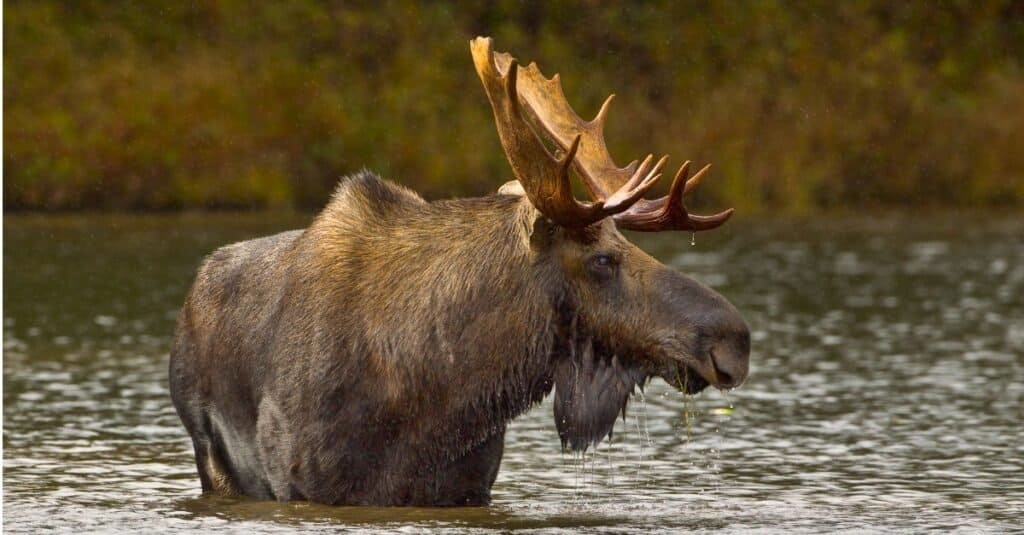
Moose aid in shaping early forest stands and maintain control over various plant populations.
©iStock.com/RichardSeeley
By selectively browsing certain species of plants, moose help shape young forest stands and keep many plant populations under control. Sodium is also important to moose. Aquatic plants, such as pondweed and water lily, have higher sodium content than woody vegetation and are an important part of a moose’s diet.
The moose’s “job “is to eat aquatic and terrestrial plants. By eating the plants, the moose keeps the plant population under control and it allows the moose to grow, live, and stay healthy. The moose also acts as a food source for predators such as the grizzly bear and the grey wolf.
Thank you for reading! Have some feedback for us? Contact the AZ Animals editorial team.

